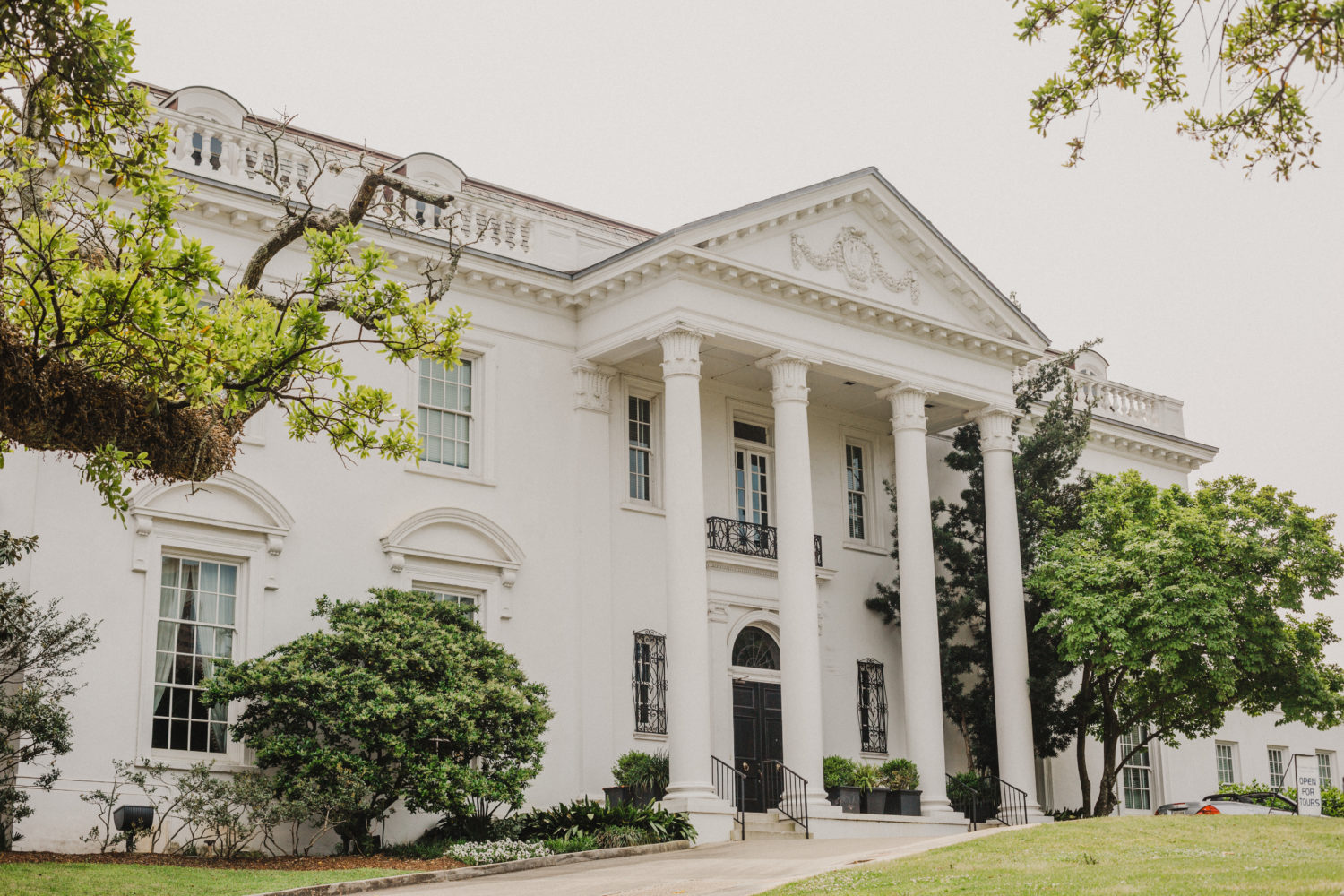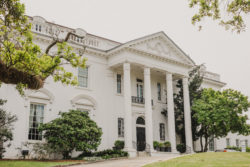Parish Spotlight
Cuts to Culture
Budget woes threaten the capital’s cultural institutions
Published: May 31, 2019
Last Updated: June 1, 2023

Photo by Lucie Monk Carter
The Old Governor’s Mansion, which houses and is maintained by the non-profit Preserve Louisiana, may lack preservation funds under a new budget.
For the Shaw Center for the Arts, the blow came with the loss of eight hundred thousand dollars the state would no longer provide to maintain the building’s operations. The multi-space venue showcases both big screen and black box theaters, Old Masters and never-before-seen prodigies; it provides homes for the Louisiana State University Museum of Art, the only dedicated art museum in the city, and the beloved Manship Theatre, known for screening everything from foreign art films to family favorites. The Center even has room to house other non-profits, including the Center for Planning Excellence and the George Rodrigue Foundation of the Arts, so that even as it makes a space for past and present artistic endeavors, it fosters a future generation of creative expression. Though the budgetary axe technically fell on only a single line item, its effects reverberate through a whole network of arts venues, community organizations, beloved eateries, and other forces that play a part in keeping downtown Baton Rouge vital.
Luckily, there will be a future for the Shaw Center for the Arts—at least for now. Louisiana State University and the Baton Rouge Area Foundation, which jointly operate the Shaw Center through a cooperative endeavor agreement with the state, struck a bargain to assume more financial responsibility to keep the facility running. However, this deal is only effective through the end of June 2019, and in the face of the ongoing funding battles for education and the arts, this comes across as more of a reprieve than a victory. But whatever the terms of the agreement, it at least grants the Shaw Center and its tenants a bit of breathing room. The Old Governor’s Mansion, which suffered one hundred thousand dollars in cuts from its operating budget, has not yet been granted such a lifeline.
The Old Governor’s Mansion, built in 1930 at the behest of Governor Huey P. Long, has earned spots on the National Register of Historic Places and any list of Baton Rouge tourist attractions. It also serves as the headquarters for the nonprofit organization Preserve Louisiana, which champions the cause of keeping the past alive, not as a static relic, but as part of an ongoing conversation about Louisiana’s constantly unfolding story. Preserve Louisiana’s regular tours of “Louisiana’s White House” are a treat for anyone interested in aesthetic architecture and colorful civic tidbits. But it’s their interactive student programs that really shine, with tours that integrate site and subject to engage curious minds in subjects ranging from Louisiana civics to architectural geometry.
Though Preserve Louisiana is involved in preservation efforts statewide, the Old Governor’s Mansion, with its full slate of programs and events, stands as one of their flagship projects. The building is still owned by the State of Louisiana, but as the nonprofit’s executive director Fairleigh Jackson says, “[Preserve Louisiana] has been entrusted with the stewardship of the property. . . . We take that seriously; we have done a lot to uphold it in our time here.” But even the most diligent steward might struggle with having the entire mantle of an estate abruptly placed on their shoulders. Jackson has said in previous reports that Preserve Louisiana would be unable to absorb the operational costs; as yet, no solution has been reached.
Of course, undercutting the operating budget of a facility doesn’t actually make it disappear (at least, not right away), but it can grind down those who gather within it, the organizations and individuals who imbue these iconic buildings with life, relevance, and Louisiana hospitality. However striking the physical structure of buildings like the Shaw Center and the Old Governor’s Mansion, it’s not their architecture that makes us remember them as landmarks of the “real” Baton Rouge. It’s the stories that grow inside them, the marks made by the lives and inspirations of those who came before that may inspire another in turn, and the countless memories that take root every day as locals and visitors explore their halls.
In their hearts, every Louisianan knows the worth of a good story, and why it’s important to protect these kinds of places that bring so many people and stories together: if you don’t share a story, it dies.
Anne Delatte is a Louisiana native whose writing on culture and lifestyle has appeared locally in DIG Baton Rouge and Country Roads Magazine, as well as on blogs for nationwide brands such as Spice Islands and Marriott Traveler. Her favorite topics tend to emerge where an area’s culture intersects with a unique thread of history, language, and/or the culinary arts.
